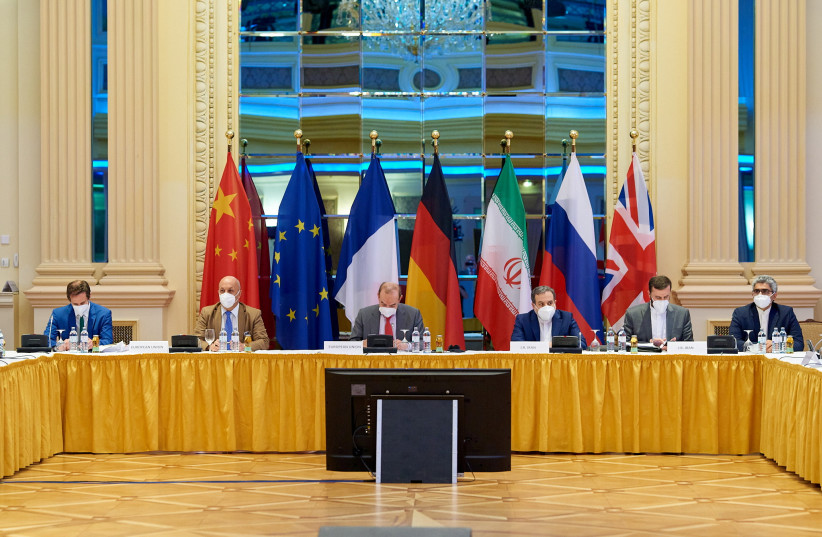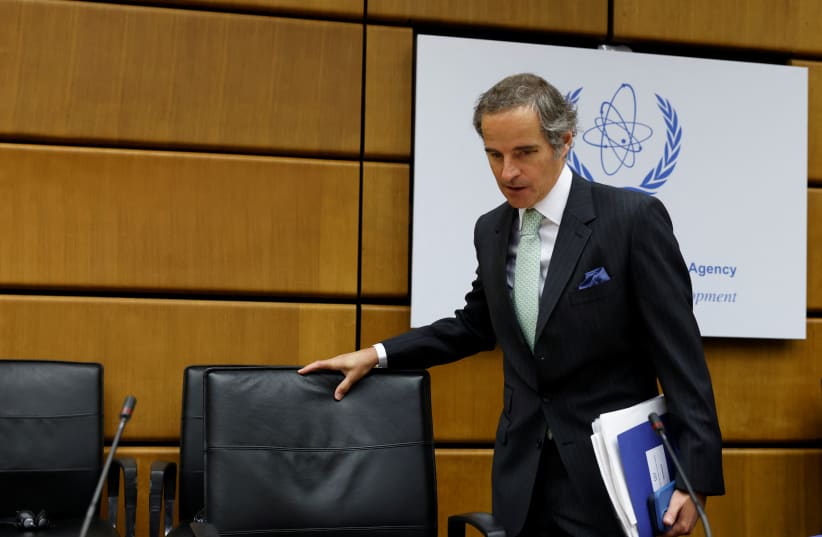Recently, hypotheses about the advisability of reviving the Iran nuclear deal, signed in 2015, have been discussed in academic research and political media circles. Is it in the interests of security and regional stability, or does it serve as a cover for the development of Iran’s nuclear capabilities and provide more leeway for Iran’s hegemonic and expansionist policies?
Opinions in the United States, other countries and stakeholders are divided between opponents and supporters of reviving the agreement.
The Jerusalem Post recently published an article titled “Absence of Iran nuclear deal could spell danger for Israel,” citing intelligence sources that the absence of a nuclear deal with Iran could pose an immediate nuclear threat to Israel because the consequences of not making an agreement seem worse than a bad deal.
Iran may be able to produce four nuclear bombs if efforts to reach an agreement with it fail. Realistically, this assessment can be analytically defensible, at least in terms of recognizing that we are in a choice between bad and worse.
But if we look at the implications of the period when the original agreement signed in 2015 was in effect and before the Trump administration withdrew from it in 2018, it becomes clear that the Iranian threat has many facets and is not limited to the threat of a nuclear bomb. It is a catastrophic threat that should not be underestimated, once it arises. But there are other kinds of Iranian threats that should not be underestimated.


First of all, there is the financing and arming of terrorist militias scattered in various regions of the Middle East, such as Yemen, Lebanon, Syria and Iraq. In my opinion, this is the most consistent and influential realistic threat to regional security, because it is the one that really exists, and is ready to be used and directed against countries and interests of the region.
Consequently, the Iranian threat should not be limited to the nuclear component as the worst potential threat. Nor should we cave in to the bad option on the grounds that we are avoiding the worst. The bad option is not our destiny in this inflamed region of the world.
The worst should not be the boogeyman that Tehran rattles the world with. The real conclusion is that the Iranian threat has not ended with the 2015 agreement but has only slowed down a bit. Further delay by reaching new agreements does not mean that we have rid ourselves of the danger, only that we have further pushed it back.
I understand that the real problem lies in the substance of the Joint Comprehensive Plan of Action (JCPOA), which ignored consideration of the Iranian issue in its various aspects. Equally, it has ignored the views of Iran’s neighbors. The threat they feel is not limited to the nuclear element. So this whole thing cannot be treated as a fait accompli.
THIS FLAWED agreement, full of loopholes, should not be the only option for the region and the world. Its revival is only an achievement of the Iranian side or of those who seek to delay the threat and pass it on to our future generations in the region. Choosing badly in terms of compromising with the worst is perhaps a realistic assessment its supporters may see regarding the complex situation in Vienna.
But we believe that with or without the agreement, there is no real international opportunity to control the development of Iran’s nuclear program, given its evasiveness and secrecy. Iran publicly admitts that it has enriched 60% of its uranium since the deal was frozen.
Theoretically, reaching the 90% uranium enrichment ceiling (the fraction suitable for nuclear weapons) is one political decision away, if we exclude the accumulation of actually needed quantities.
The dilemma in the Iranian issue is how to confine it to the nuclear angle, since the danger is not limited to nuclear ambitions, but to the intentions of using them, on one hand and the whole Iranian project, of which nuclear capabilities are just one instrument, on the other.
Here, we must remember that one of the mistakes of the JCPOA signed in 2015 was that it limited the Iranian issue to the nuclear aspect and did not address the threat of the missile program or Iran’s overall hegemonic expansionist policies and regional influence, not to mention the recent drone programs serving sectarian militias, which, as everyone knows, have become the most serious threat to oil facilities and strategic interests in countries in the region.
One could say that the renewal of the nuclear deal is a diplomatically possible action under the current circumstances. In theory, this makes sense. Then again, those very circumstances have emerged when the other key party to the agreement, the US, had no real pressure cards to play.
It even makes matters worse when it insists on reducing any possible reaction to the failure of the Vienna talks to diplomatic action, without intending to simply wave any stick, impactful or not. US officials repeatedly state that all options are on the table.
But they rule out military action, which President Joe Biden does not support because it would only roll back Iran’s nuclear program – as if a renewed deal would lead to different results. Everyone knows that the US behavior toward Iran has been shaped by the failures of US military interventions in the Middle East. No one is really asking for such interventions or wants them.
But the dilemma remains a demonstration of strategic deficits and a lack of alternatives to a party that knows nothing but evasiveness, maneuvering and buying time. As a result of all of the above, the trade-off between bad and worse will wind up for the worse in our region.
The bad will only lead to more funds, more room to maneuver, more influence and more extension for Iran, only to take us back to the climate of the 2015-2018 era, the results of which we now see in Iraq, Syria and Lebanon.
The writer is a UAE political analyst and former Federal National Council candidate.
